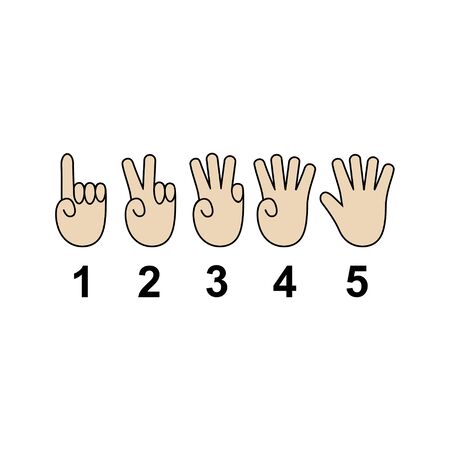Introduction to Fate Line in Indian Palmistry
In Indian palmistry, the study of the Fate Line—also known as the Destiny Line or Fortune Line—holds a special place in understanding an individual’s life journey. Deeply rooted in Indian tradition and cultural beliefs, this vertical line running through the centre of your palm is often seen as a mirror reflecting your professional path, ambitions, and overall life direction. Unlike Western interpretations, Indian palmistry considers the Fate Line not merely as a predictor of career success but also as a symbol of karmic influences, societal expectations, and personal dharma (duty). For generations, people across India have consulted experienced palmist “pandits” to read their Fate Lines, hoping to gain insights into their future prospects and the obstacles they might encounter. The presence, absence, or clarity of this line is believed to be shaped by both past deeds and current efforts—a concept closely tied to Hindu philosophy. As we explore the role of the Fate Line within Indian culture, it becomes evident that this single line is more than just a mark on your hand; it represents the intricate interplay between destiny and free will that is central to many Indian worldviews.
Identifying the Fate Line: Common Patterns and Placements
The Fate Line, or Shani Rekha in Indian palmistry, is a crucial indicator when it comes to career prospects and life path. Understanding how to locate and interpret this line is essential for anyone interested in traditional Indian hand reading. Here’s a detailed guide on identifying the Fate Line, exploring its typical origin points, endings, and the cultural significance of its various patterns.
How to Find the Fate Line on Your Palm
The Fate Line usually begins somewhere at the base of the palm and runs upwards towards the middle finger (Saturn finger). In Indian hands, it may show several variations. Some people may not have a visible Fate Line, which is also interpreted within the cultural context.
| Origin Point | Ending Point | Common Variation |
|---|---|---|
| Base of Palm (center) | Beneath Middle Finger (Saturn mount) | Straight, unbroken line |
| Mount of Luna (little finger side) | Crosses palm diagonally to Saturn mount | Curved or wavy line |
| Life Line intersection | Middle of palm or Saturn mount | Branching lines or forks |
Cultural Context: What Patterns Mean in India
In Indian tradition, the presence and clarity of the Fate Line are seen as markers of destiny and karma. For example:
- A deep, straight Fate Line: Indicates a clear career direction and steady progress, often associated with blessings from Lord Shani (Saturn).
- A faint or broken Fate Line: May suggest obstacles or changes in career path. In Indian culture, this could be interpreted as challenges given for personal growth by one’s fate.
- A line starting from Mount of Luna: Suggests success through creativity or public support, valued highly in many Indian communities.
- No visible Fate Line: Sometimes found in spiritual individuals; interpreted as someone who creates their own destiny rather than following a predetermined path.
Why Placement Matters: Indian Perspective
The placement of the Fate Line reflects not just professional outcomes but also family expectations and social roles—critical themes in Indian society. For instance, a strong line emerging from the Life Line can indicate family support in career matters, which resonates deeply with Indian cultural values around family unity and collective success.

3. Career Success and the Fate Line: Indian Interpretations
In Indian palmistry, the Fate Line—often called the Shani Rekha—is believed to hold significant clues about one’s professional journey and overall prosperity. Unlike Western interpretations that sometimes generalise the Fate Line as a symbol of destiny, Indian palmists give it nuanced meanings based on its origin, direction, and intersections with other lines.
Professional Growth: Indicators on the Shani Rekha
The depth, clarity, and straightness of the Shani Rekha are considered strong indicators of career progression. A deep and unbroken Fate Line is traditionally interpreted as a sign of steady advancement in one’s chosen field (vyavasaayik pragati). If the line starts from the base of the palm (the Mount of Moon or Chandra Parvat), it suggests that the individual’s success may be influenced by creativity or support from others. When it rises from the Life Line (Jeevan Rekha), self-effort and personal drive are seen as key contributors to career achievements.
Job Stability: Reading Breaks and Branches
Indian palmists pay close attention to breaks, forks, or branches along the Fate Line. A clear, continuous line without interruptions is believed to indicate stable employment (sansthir rozgaar). Conversely, breaks or sudden changes in direction may reflect periods of unemployment, job switches, or unexpected challenges. Minor branches leading upwards are often interpreted as opportunities for promotions or new ventures, while downward branches might hint at setbacks or temporary losses.
Prosperity and Real-Life Examples
The presence of crosses, stars (tara), or squares on the Fate Line can also influence interpretations. For instance, a star on this line is sometimes regarded as a mark of special recognition or sudden financial gain (aapaat dhanik laabh). In practice, many renowned Indian personalities—such as successful entrepreneurs and public servants—have reportedly had prominent Fate Lines aligning with their distinguished careers. These real-life cases reinforce the belief within Indian culture that studying the Shani Rekha offers practical insights into ones vocational fate and economic well-being.
Understanding these native terms and cultural references allows readers to appreciate how deeply intertwined palmistry is with traditional Indian perspectives on career success and life’s fortunes.
4. Cultural Beliefs: Fate, Karma, and Hard Work
In the context of Indian palmistry, understanding the Fate Line—also called the Bhagya Rekha or Fortune Line—goes beyond simply reading a palm. It is deeply intertwined with broader philosophical concepts like fate (bhagya), karma, and personal effort. Many people in India believe that their destiny is written in their hands, but Indian philosophy actually offers a more nuanced perspective on how life unfolds.
The Interplay of Fate, Karma, and Effort
Indian culture teaches that life’s outcomes are not determined by fate alone. The three major forces at play are:
| Concept | Meaning | Role in Career Success |
|---|---|---|
| Fate (Bhagya) | The circumstances you are born into; what is “written” for you | Provides a starting point but does not guarantee outcomes |
| Karma | Your actions in past and present lives; the law of cause and effect | Influences opportunities and challenges encountered in career |
| Personal Effort (Purushartha) | Your conscious decisions, hard work, and persistence | The most critical factor for achieving success and growth |
Misconceptions about the Fate Line in Indian Palmistry
A common misconception is that a strong or clear Fate Line guarantees professional achievement or financial prosperity. However, traditional Indian wisdom cautions against such deterministic views. While the Fate Line can indicate potential trends or periods of opportunity, it should not be interpreted as an absolute predictor of success or failure.
Clarifying the Real Message of the Fate Line
The Fate Line is best seen as an indicator of how external circumstances may interact with your personal drive and karma. For instance, a well-marked Fate Line may suggest access to good opportunities, but without consistent effort and positive karma, these opportunities might not lead to lasting achievement. Conversely, individuals with faint or broken Fate Lines have still risen to great heights through determination and ethical actions.
Cultural Perspective: The Balance of Destiny and Action
This balanced view is reflected in many Indian proverbs such as “Apna haath jagannath” (Your own hand is your destiny) and “Karma kar, phal ki chinta mat kar” (Do your duty, do not worry about results). These sayings remind us that while destiny plays a role, it is ultimately our actions and intentions that shape our careers and lives.
5. Common Myths and Misconceptions in Indian Palmistry
Indian palmistry, or hast rekha shastra, has been a part of our culture for centuries. However, several myths and misconceptions about the Fate Line, also called the Fortune Line, are widespread in local communities. Let us debunk some of these common beliefs and understand how to approach palmistry with a responsible mindset.
Myth 1: A Strong Fate Line Guarantees Career Success
Many people believe that a deep and straight Fate Line means you are destined for an excellent career. While the Fate Line can indicate tendencies or potential, it does not guarantee success without hard work, skills, and dedication. Your karma (actions) and efforts play a crucial role in shaping your destiny.
Myth 2: Absence of Fate Line Means No Future
This is a common misconception. Several successful people have little or no visible Fate Line on their palms. Indian palmists explain that everyone creates their own path through determination and perseverance. The absence of a line should not discourage anyone from pursuing their ambitions.
Myth 3: The Fate Line Never Changes
It is often said that palm lines are fixed at birth, but this is not true. As per Indian belief, your lines can change with time based on your actions, thoughts, and life experiences. This highlights the importance of free will over blind fate.
Guidance for Responsible Belief
While palmistry is an integral part of Indian tradition, it should not replace rational decision-making or modern career planning. Use insights from your hand as guidance, but make choices based on education, self-assessment, and practical opportunities. Remember, the Fate Line is just one aspect among many factors influencing your life journey.
The Importance of Balanced Perspective
Approaching Indian palmistry with an open yet critical mind helps prevent superstitions from taking root. Always consult experienced palmists who respect scientific reasoning and cultural values. By keeping a balanced perspective, you honour both your heritage and your personal growth.
6. Consulting a Palmist: Wisdom and Ethical Considerations
Approaching a Qualified Indian Palmist
In India, consulting a palmist is both a personal and cultural experience. Before seeking guidance, it is important to identify a palmist with authentic credentials and a positive reputation within the community. Referrals from family or friends are highly valued in Indian society, as trust and word-of-mouth play a key role. When visiting, modest attire and respectful behaviour reflect cultural etiquette and show reverence for traditional wisdom.
What to Expect During a Consultation
An Indian palmist typically begins by greeting you with respect—sometimes with a simple “Namaste.” The session may start with questions about your background and intentions. The palmist will closely examine your right hand (for males) or left hand (for females), according to common Indian tradition, focusing on the fate line (fortune line) and other significant markings. Expect the conversation to blend palmistry insights with references to Vedic philosophy, local customs, or even astrological principles.
Integrating Palmistry Insights with Practical Life Decisions
Palmistry in India is not merely about predicting future events—it offers guidance for self-understanding and making wise choices. After learning about your fate line’s indications regarding career success, consider these practical tips:
1. Use Palmistry as Guidance, Not Certainty
Remember that lines can suggest tendencies, but your actions, efforts, and intentions play a crucial role in shaping outcomes. Avoid relying solely on predictions; let them inform your decisions rather than dictate them.
2. Balance Spiritual Insight with Real-World Effort
The wisdom of palmistry complements hard work, education, and skill development. Integrate the advice into your career planning, but continue to seek growth through learning and perseverance.
3. Ethical Considerations
A qualified Indian palmist will never instil fear or promise unrealistic results. Be wary of anyone demanding high fees for guaranteed success or exploiting personal concerns. True practitioners respect confidentiality and empower you to make informed choices.
Cultural Sensitivity and Etiquette
Show gratitude at the end of your session—offering thanks or even a small token is appreciated in Indian culture. Understand that palmistry is interwoven with spirituality; approach it with openness while respecting its limitations. By combining ancient insights with practical steps, you can navigate career aspirations wisely while honouring the rich heritage of Indian palmistry.

